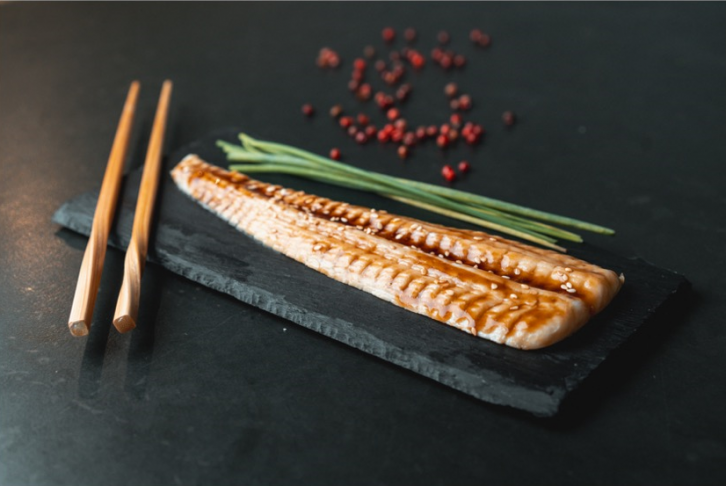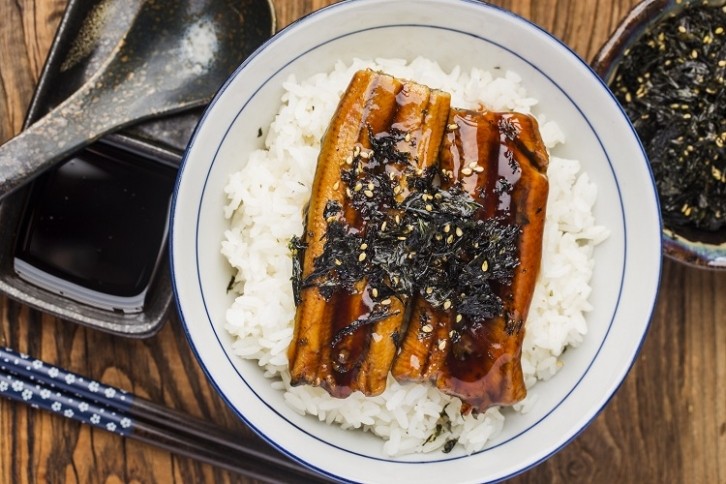Steakholder Meals (previously MeaTech 3D) works in meat alternate options: the Israeli start-up is an innovator of cell cultivation expertise – and considers itself the primary and solely cultivated cell developer listed on the Nasdaq Inventory Market – whereas additionally growing 3D printing expertise to provide meat and fish merchandise from plant- and/or cell-based components.
It’s this second experience that has resulted within the launch of an ‘business first’ plant-based 3D printed eel. The product was developed utilizing Steakholder’s proprietary ‘DropJet’ expertise, which CEO Arik Kaufman says is liable for mimicking ‘actual meat texture’.
Reaching ‘actual’ meat texture with plant-based components
At present, most plant-based meat alternate options are ‘floor’ in texture. Be it plant-based burgers, sausages, or meat-free meatballs, these properties are thought of simpler to realize with plant-based components.
However based on Steakholder, its proprietary expertise – which it has coined DropJet – can create ‘actual’ meat texture utilizing plant-based supplies and/or cultivated cells. “As well as, this expertise is a platform to provide quite a lot of merchandise with full digital management,” Kaufman instructed FoodNavigator.
“Our 3D printing expertise affords full digital management on the printing course of so one can design the product’s 3D modelling, texture, flavour, dietary values and extra. It’s constructed to be modular with printing capability that may attain excessive throughput of [hundreds] of tons monthly.”

When working to duplicate eel, the 3D printing expertise permits for the meat’s ‘complicated texture’ to be achieved via precision layering mixed with a ‘distinctive’ mixture of supplies used throughout the expertise.
Plant-based components for now, cultivated cells sooner or later
The brand new eel product is at present primarily based on plant-based components. Particularly, the matrix is created from ‘top quality’ plant proteins, fats, and ‘different vegan components’ designed to imitate the feel and flavour of typical eel. The components additionally provide ‘vital’ financial benefits, the CEO revealed. “The product is extremely worthwhile for producers and inexpensive for the tip shopper.”
As to the dietary profile of Steakholder’s 3D printed eel various, the corporate goals to realize on par credentials with the actual factor. “For any product we develop, we purpose to succeed in a minimum of the identical dietary values,” defined Kaufman. “A part of the flexibleness of our 3D printing expertise permits the development and adjustment of the dietary values based on its companions’ necessities.”
Whereas the corporate’s eel product is at present solely primarily based on plant-based components, it expects to include cultivated eel cells sooner or later, as economics of scale enable for extra price-competitive improvement.
Steakholder stays dedicated to cultivated meat, the CEO assured us, and the enterprise continues to do ‘pioneering work’ on this space. Certainly, as a part of the corporate’s enterprise mannequin, it affords 3D printing expertise and ink (created from each plant-based supplies and cultivated cells) to its B2B purchasers.
“As cultivated cells have but to succeed in commercialisation readiness, we provide our ink as plant-based within the first stage, and when it is sensible economically, our expertise can combine cultivated cells,” defined Kaufman.
“That strategy permits us to supply a profitable enterprise mannequin the place our companions can profit from the progressive expertise to 3D print plant-based meat and fish merchandise with the potential to be a lot better than a lot of the alternate options out there at the moment.”
Steakholder is at present exploring collaborations to commercialise its new product purchase supplying companions with its proprietary 3D printers and ink.
Providing another, ‘extra sustainable’ answer to conventional eel
In so doing, the corporate predicts its prospects will have the ability to mass-produce its 3D printed eel various at a ‘aggressive’ value vary, and subsequently assist to sort out the fee challenges related to the present international costs of eel.
The worldwide eel market primarily depends on wild eel, however eel shares are on the decline. In Europe, unlawful commerce of the critically endangered European eel is taken into account the continent’s ‘largest wildlife crime’, and even additional afield (in Japan, for instance), eels are liable to extinction. Farming eel comes with its personal challenges: for one, breeding can show troublesome because of the ray-finned fish’s complicated life cycle.

For Steakholder, the necessity to develop a sustainable various is clear. The corporate’s plant-based eel is being developed with the Asian and Japanese markets in thoughts (in Japan, 1.5m folks say they eat eel greater than twice a month, based on Statista) however not solely.
“Eel is especially offered in Asia but in addition world wide,” defined Kaufman. “The product is an instance of the 3D printing capabilities that may develop and produce extra superior merchandise with the feel and flavour of actual meat.”
Steakholder Meals’ plant-based eel various product is the most recent improvement in a line of advances in cell cultivation and 3D printing expertise. The corporate began its innovation journey in beef, earlier than rising its capabilities in poultry, seafood and pork.
In 2021, the corporate acquired Begian cultured fats developer Peace of Meat. The next yr, it introduced a collaboration with cultured seafood firm Umami Meats, and likewise began growing cultured pork merchandise from a brand new line of iPS porcine cells. Additionally in 2022, the corporate introduced its improvement of marbled cell-based beef bites developed with its 3D printing tech.
And in 2023, Steakholder debuted a ready-to-cook cultivated grouper fish product utilizing grouper cells supplied by Umami Meats.

